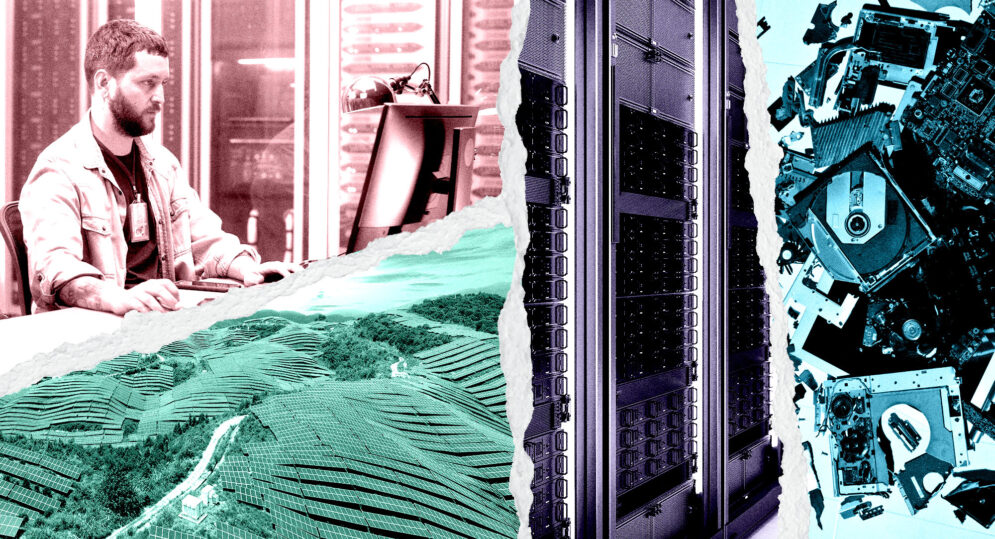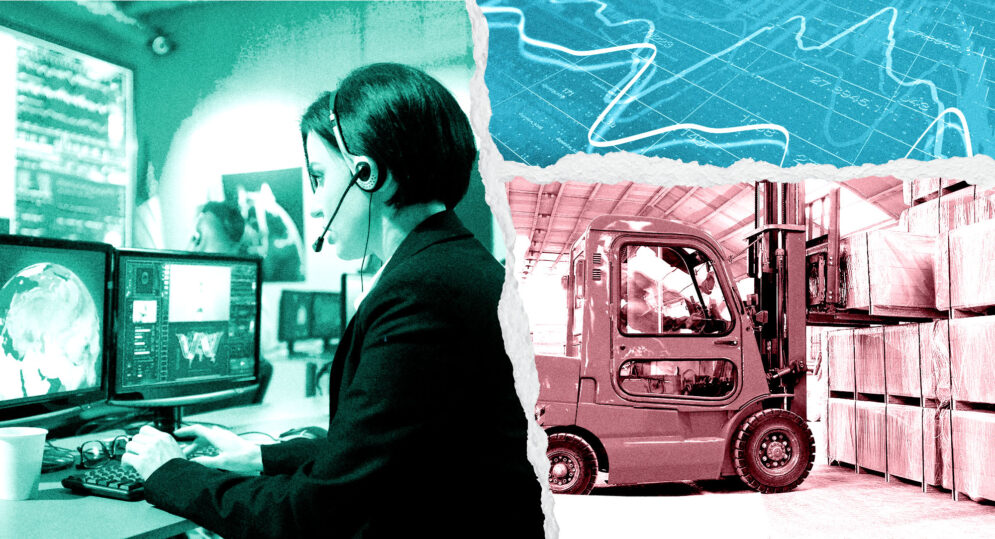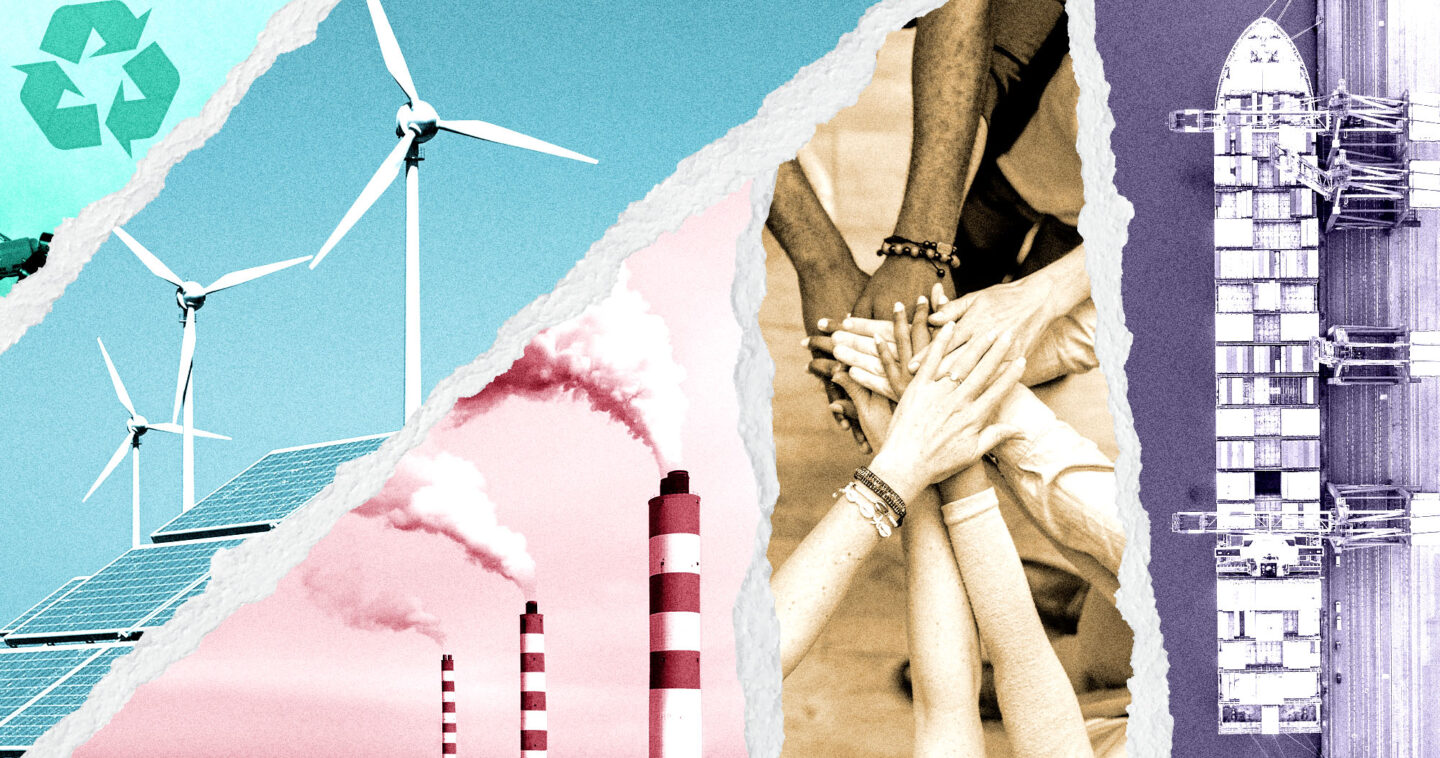The Evolving Role of Sustainability
Sustainability analyst. Corporate responsibility manager. Sustainability advisor. These are job titles unheard of not long ago, but the role of sustainability in business is on the rise.
A recent survey conducted by GreenBiz Group, with insights from LinkedIn, found increases in both job postings (10%) and members with sustainability titles (7.5%) from 2019-2020. The top sustainability job titles, including sustainability analyst, grew 20% over the past two years.
Ofer Ben-Dov, sustainability practice lead at Traction on Demand, has been in the sustainability field throughout its evolution. Early in his career he worked for Greenpeace on marine toxic issues and energy. He holds two bachelor’s degrees in biotechnology and environmental studies, and two master’s degrees in renewable energy and sustainability innovation.
“Twenty years ago businesses viewed environmental and sustainability issues from a [marketing communications] perspective: how are we perceived from the outside? How can we look better?” But gradually sustainability initiatives moved from marketing into operations to make these initiatives a reality, he explained. “[It’s] not just greenwashing,” when companies claim they’re doing more than they are, “you actually need to walk the talk,” he said.
The impact of climate change on sustainability
Climate change awareness has accelerated the sustainability conversation.
“It used to be about ‘why we should care?’ and then, ‘how do I actually profit from caring about environmental issues and sustainability?’” said Ben-Dov. “Companies today understand climate change has a much wider impact on their business performance than the discussions we used to have five to eight years ago.”
But, according to Ben-Dov, the one thing climate scientists and models missed was how quickly the impacts of climate change would show.
“People are feeling it,” he said. “It’s not something that might happen in 50 years, but remember how many hurricanes we had last season? How many people were [displaced]? We’re not talking about what could happen but what did happen. It’s a big change in how we perceive things.”
Adding to the need to walk the talk, companies are seeking sustainability projects that impact the bottom line. Financial institutions began asking for potential clients to demonstrate their sustainability efforts and in 2015, the same year as the climate Paris Agreement, formed the Task Force on Climate-related Financial Disclosures (TCFD). Different frameworks emerged from a number of organizations measuring various aspects of sustainability, seeding the need for impending regulations.
Corporate responsibility reporting on sustainability — including environmental, social, and governance (ESG) performance — has grown more than fivefold in the past 10 years, according to GreenBiz Group in its annual “State of the Profession” report. In 2011 only 20% of S&P 500 companies published a sustainability report, but by 2018 that number rose to 86%.

Data at the heart of sustainability
Josh Parker, senior director of corporate sustainability at Western Digital, was tapped to drive sustainability programs at the company by forming a new corporate sustainability function. Parker and his team collect data to assess and advise best practices on risks and opportunities based on that data.
Parker, who grew up in Oregon, cites his mother’s accreditation as a “master recycler” as an early influence in his path to his current sustainability role. When this opportunity arose, he jumped at the chance to do something both personally meaningful and professionally challenging.
Prior to building the company’s sustainability department, he spent two years in Thailand as regional head of ethics and compliance for Western Digital, visiting the company’s factories across Asia. He works with departments across the company, including operations, human resources, quality, sales, and its business units. Parker says a growing number of sustainability professionals reside in the legal department, because sustainability goals and efforts closely tie with compliance and they can be agnostic among these groups.
Western Digital’s sustainability initiatives fall under three main categories: energy and emissions, human rights, and lifecycle impacts of its storage products.
“We’re in a unique position because we have both an enterprise business and a retail business,” said Parker, referring to the company’s storage solutions that reside in anything from mobile phones and personal computers to the largest data centers.
Parker said the company has experienced an uptick in customers who now ask for sustainability data and progress when evaluating its solutions. Additionally, many of its enterprise customers (such as cloud titans) want to collaborate to decrease carbon emissions since Western Digital’s products power their data centers.
With great power comes great responsibility
Data centers are among the largest consumers of power and electricity and have the fastest-growing carbon footprint of any sector within the IT industry.
“Everything we do electronically or online is being done in a data center somewhere and demands a lot of energy,” said Ben-Dov. “Unless the power is coming from wind, solar, hydro or clean energy, it has a carbon footprint. Choosing the right servers, cloud providers and asking things like ‘where do you host your services?’ are questions no one asked until a few years ago.”
Shifting to supply chain
The next step in sustainability’s evolution is to extend efforts to the supply chain.
“It’s a different landscape now. It’s no longer just how regulations impact me or how can I be a part of the solution because I’m extracting fossil fuels or building windmills, but how it relates to the supply chain,” said Ben-Dov. “Where are the raw materials you need to operate coming from? How does a storm impact that? If I need to ship a raw material from southeast Asia to North America, and it’s interrupted by storms, what should I do? Source things locally?”
Parker agrees sustainability is filtering down the supply chain and predicts it is one of the top focuses for companies in the next few years.
Western Digital’s Procurement Center of Excellence designed a predictive model to identify potential weather risks and determine their impact on the company’s supply chain. For example, if a typhoon is moving toward its many factories in Asia, data engineers are able to see the forecasted path of the storm and identify which of the company’s suppliers or hubs are in that path. Armed with this data, they can then see what purchase orders they have from those suppliers and mitigate risks before the storm makes landfall.
When Covid-19 hit, the team quickly adapted the predictive risk model, named Predictive Peak, to predict the path of the pandemic. Using the model, the company was able to predict lockdowns in Japan, Malaysia, China, and the Philippines a week in advance, and could make critical adjustments to the supply chain.

70%-90% of a carbon footprint sits in the supply chain
Ben-Dov works with sustainability leaders from enterprise software companies to large manufacturers and retailers. These companies operate very different businesses but share a focus on sustainability in the supply chain. A software company may be a huge business, he says, but from an operations perspective it’s fairly simple to manage its carbon footprint because it doesn’t manufacture a physical product or have a logistics fleet.
“Their footprint is about energy consumption: heat, refrigeration, greenhouse gasses, but that’s about it,” said Ben-Dov.
A large retailer, by contrast, has thousands of store locations and a distribution fleet, so its carbon footprint is more complicated to manage.
“Seventy to 90% of a carbon footprint of a service sits in the supply chain, either before it reaches the shelf or (in the case of appliances for example) after it’s with the end customer,” said Ben-Dov. “That means 70%-90% is outside of a large retailer’s control.”
Sustainability growing in company culture
A McKinsey Sustainability report found 40% of respondents expect company sustainability programs to generate value in the next five years – nearly double the current share. The same report found that nearly 60% of respondents at value creators, companies that generate value from their sustainability programs, say that sustainability is a part of the corporate culture.
Parker recently attended the COP26 where Western Digital joined some of the largest companies in the world as part of the First Movers Coalition, committing to buy low-carbon products and services to help confront the climate crisis.
Ben-Dov is optimistic. “I really believe that people want to do the right thing if they have the right information and you give the mandate to do so.”
“Do your research and be data-centric,” Parker recommends. From choices as seemingly simple as whether to replace plastic cups in the office to ensuring your supply chain is adhering to sourcing guidelines, data is at the heart of sustainability.




